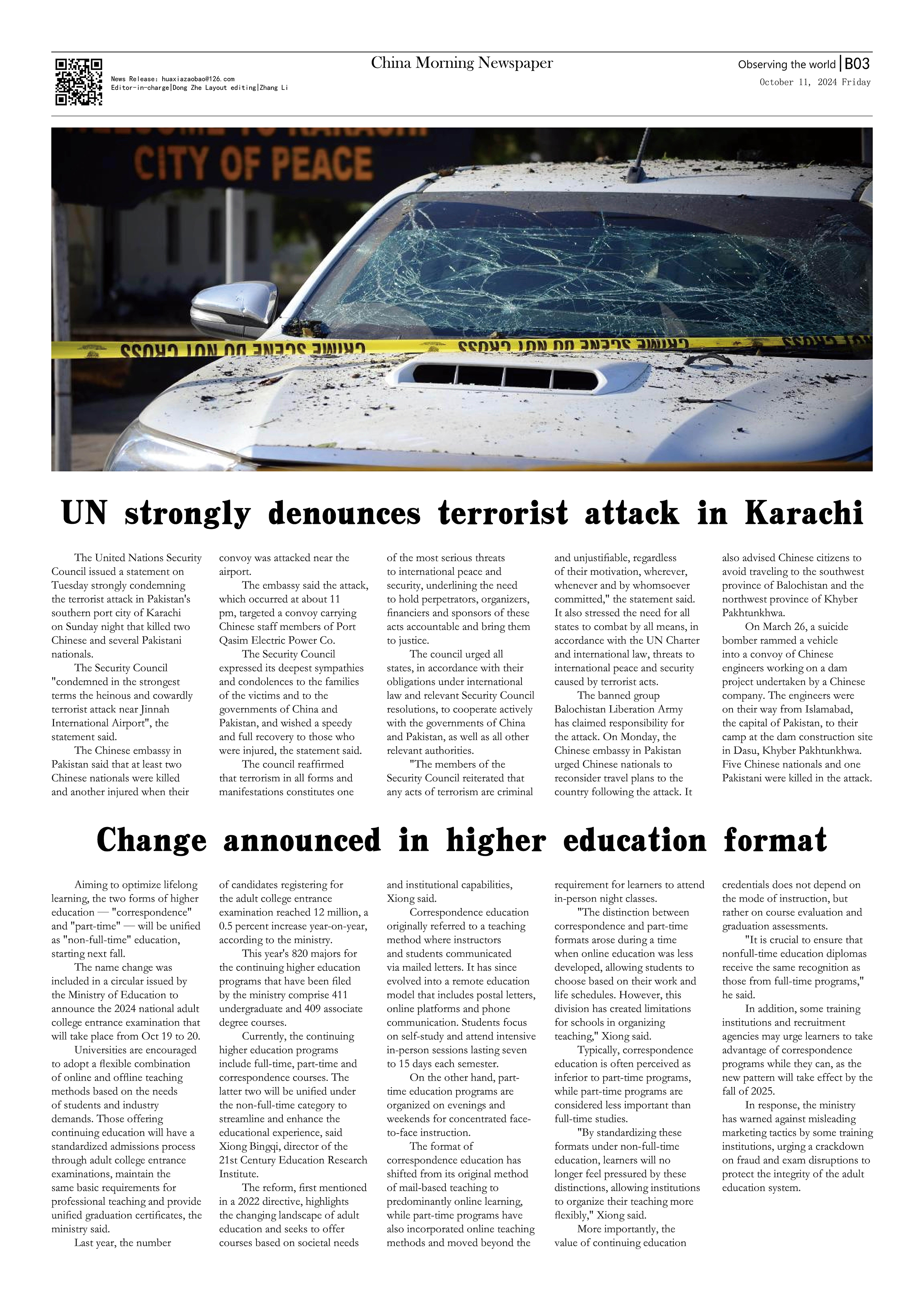
Change announced in higher education format
The name change was included in a circular issued by the Ministry of Education to announce the 2024 national adult college entrance examination that will take place from Oct 19 to 20.
Universities are encouraged to adopt a flexible combination of online and offline teaching methods based on the needs of students and industry demands. Those offering continuing education will have a standardized admissions process through adult college entrance examinations, maintain the same basic requirements for professional teaching and provide unified graduation certificates, the ministry said.
Last year, the number of candidates registering for the adult college entrance examination reached 12 million, a 0.5 percent increase year-on-year, according to the ministry.
This year's 820 majors for the continuing higher education programs that have been filed by the ministry comprise 411 undergraduate and 409 associate degree courses.
Currently, the continuing higher education programs include full-time, part-time and correspondence courses. The latter two will be unified under the non-full-time category to streamline and enhance the educational experience, said Xiong Bingqi, director of the 21st Century Education Research Institute.
The reform, first mentioned in a 2022 directive, highlights the changing landscape of adult education and seeks to offer courses based on societal needs and institutional capabilities, Xiong said.
Correspondence education originally referred to a teaching method where instructors and students communicated via mailed letters. It has since evolved into a remote education model that includes postal letters, online platforms and phone communication. Students focus on self-study and attend intensive in-person sessions lasting seven to 15 days each semester.
On the other hand, part-time education programs are organized on evenings and weekends for concentrated face-to-face instruction.
The format of correspondence education has shifted from its original method of mail-based teaching to predominantly online learning, while part-time programs have also incorporated online teaching methods and moved beyond the requirement for learners to attend in-person night classes.
"The distinction between correspondence and part-time formats arose during a time when online education was less developed, allowing students to choose based on their work and life schedules. However, this division has created limitations for schools in organizing teaching," Xiong said.
Typically, correspondence education is often perceived as inferior to part-time programs, while part-time programs are considered less important than full-time studies.
"By standardizing these formats under non-full-time education, learners will no longer feel pressured by these distinctions, allowing institutions to organize their teaching more flexibly," Xiong said.
More importantly, the value of continuing education credentials does not depend on the mode of instruction, but rather on course evaluation and graduation assessments.
"It is crucial to ensure that nonfull-time education diplomas receive the same recognition as those from full-time programs," he said.
In addition, some training institutions and recruitment agencies may urge learners to take advantage of correspondence programs while they can, as the new pattern will take effect by the fall of 2025.
In response, the ministry has warned against misleading marketing tactics by some training institutions, urging a crackdown on fraud and exam disruptions to protect the integrity of the adult education system.


